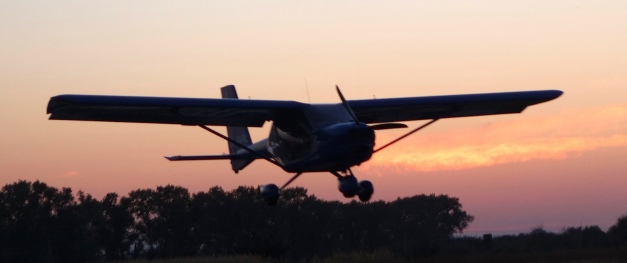 A short and useful video from Peter Reed, CFI at SkyFlyte ULA in northern Tasmania. Student Alina Herrmann is seen handling the aircraft with the engine shut down, including stalling, turning round a point and an approach and dead stick landing.
A short and useful video from Peter Reed, CFI at SkyFlyte ULA in northern Tasmania. Student Alina Herrmann is seen handling the aircraft with the engine shut down, including stalling, turning round a point and an approach and dead stick landing.
At present, this kind of training is allowed to be conducted by a CFI in controlled conditions for the purpose of advanced emergency training as detailed in the RA-Australia Operations Manual. (See RA-Aus Operations Manual, Section 3.02-2 paragraph 9) Do not try this without an appropriately qualified instructor on board!
However, in the not too distant future, RA-Australia will be withdrawing this aspect of training and intentional engine-out practice like this, even under the supervision of a CFI, will become illegal. Which seems really stupid to me and a backward step in safety improvement. Aircraft behave differently when the engine is actually stopped, as opposed to just throttled back, and practice/training with the engine off should be an essential part of the syllabus – after all, if/when the engine really stops, you’ll have enough to handle without learning how to fly a glider.
 Finally, during my visit to Ukraine last year, I was at the Aeroprakt airfield, where instruction is carried out for club members. Part of the training is dead stick landings and here is a rather low-quality photo of the last one of the day….
Finally, during my visit to Ukraine last year, I was at the Aeroprakt airfield, where instruction is carried out for club members. Part of the training is dead stick landings and here is a rather low-quality photo of the last one of the day….

Thanks Peter – I planned to do this with Gordon at my next AFR…any idea when it will become verbotten ?
The only thing I can see as a significant safety consideration is the last minute stuff up and consequent go-around. I have only ever had one landing (in rather gusty conditions I add in my defence !) where I felt it prudent to open the taps and try again. I wouldn’t be doing this kind of practice under such conditions though. Even in that instance I probably still could have landed safely, if inelegantly, in the FB. I would not be so confident of it in a Jab as they tend to stop flying a bit more emphatically. RA won’t be able to make one rule for one type and a different one for another type however.
Cheers,
AM
Andrew – I understand that the change will take effect with the release of the new Operations Manual which, I am told, brings RA-Aus flight training in line with GA, where dead stick training has been forbidden for a long time. I think the new Ops Manual is currently with CASA for approval and is likely to be issued in the next few months.
Peter, I’m working toward my pilot certificate and am interested in how aircraft handling differs between engine at idle and engine off.
Regards, Terry
Terry – when the engine is running, the propeller is giving little or no drag. In some cases, the prop may even be creating a little thrust, even at idle. When the prop is stopped completely it creates a surprising amount of drag. This is much more noticeable in low inertia recreational and light sport aircraft than in heavier GA types such as Cessnas and Pipers, where the glide performance is not very good anyway. As a result, the glide distance for very light aircraft is noticeably shorter and steeper than with the engine running. As I say, you have enough to contend with if the engine fails, without experiencing this reduced glide performance for the first time.